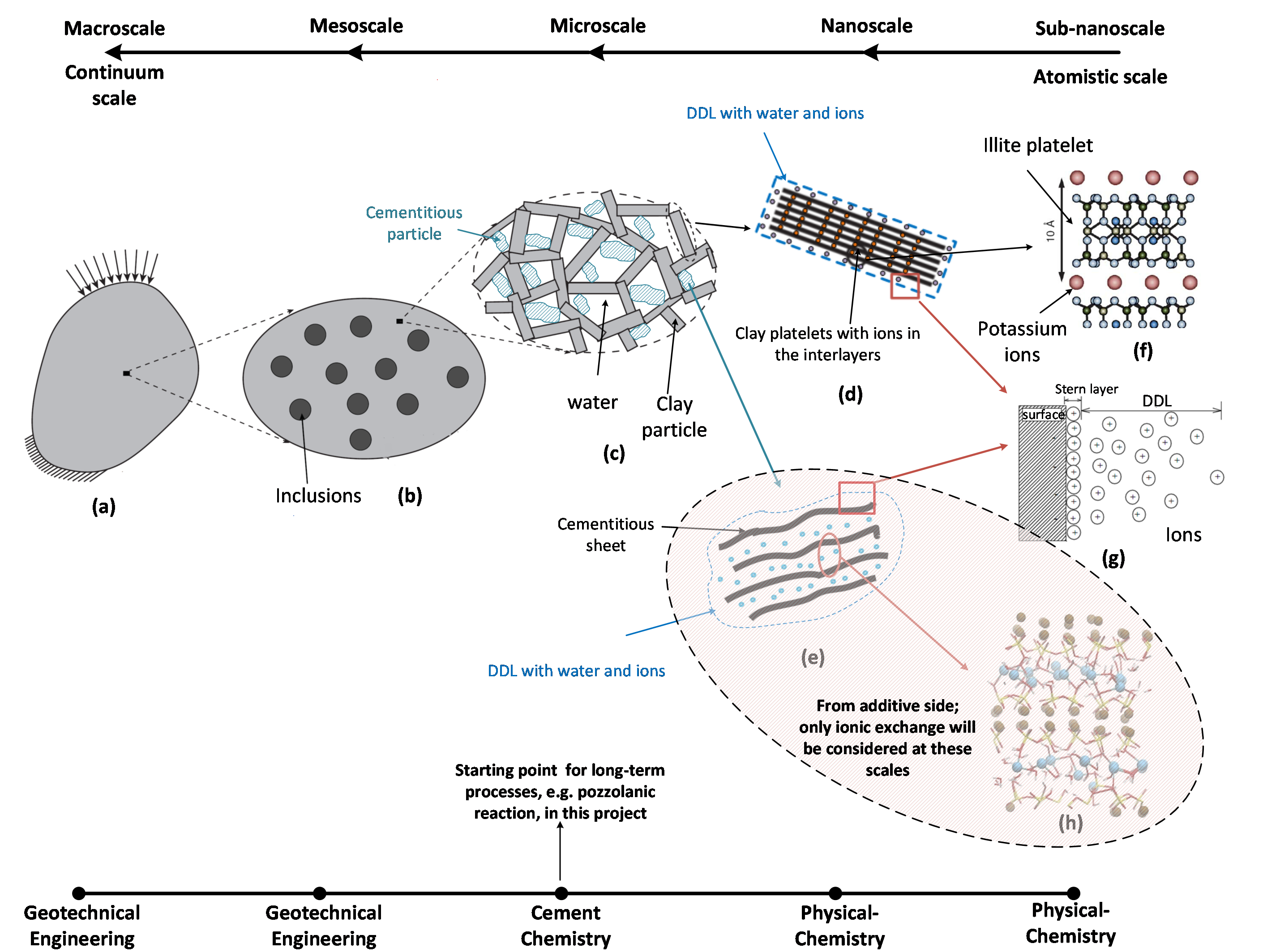Kamila Zablocka
Kamila Zablocka
Kamila Zablocka
Name: Kamila Zabłocka
Title of project (Tentative): Understanding interactions between cementitious materials and quick clay from a cement chemist perspective / Microstructural analysis of quick clay stabilized with cementitious materials
Objectives
The aim of the PhD project is to understand how reactions between clay and cementitious materials contribute to the microstructure and strength development during stabilization of sensitive marine clays. This understanding will enable to identify alternative more sustainable stabilizers, thereby contributing to the overall goal of the SSG project which is reducing emissions and material use in clay stabilization.
Background
Large infrastructure projects in Norway often require considerable ground stabilization to be completed before construction can start due to the presence of sensitive marine clays in the soil. The deep dry mixing method is commonly used in the Nordic countries with a lime-cement (LC) mixture as the stabilizing agent, or binder. This results in columns of stabilized clay in the terrain upon which construction can take place.
Although the LC is highly effective, its production in the required quantity can be the single largest contributor to CO2-emissions in a construction project that requires ground stabilization. Alternative binders with an efficiency comparable to LC and a lower carbon footprint are thus of great interest.
Research questions
(1) Despite the widespread use of LC in ground stabilization little is known about what occurs on the microscale when the binder is combined with the clay. One of the main goals of the project is to determine the chemical composition and spatial distribution of hydration and pozzolanic reaction products and to determine their impact on strength development.
(2) Based on the findings in (1) an alternative to LC of comparable strength and lower carbon footprint is to be proposed. Waste products from other industries, such as cement kiln dust (CKD) or recycled concrete (RC), are to be considered to further the establishment of circular economy within the field.
Collaboration
The PhD project is part of the interdisciplinary research project Sustainable Stable Ground (SSG). The project creates a framework to investigate the challenges connected to ground stabilization with a multiscale approach where each scale involves a different discipline. Knowledge form nano- and microscale is to be upscaled to the meso- and macroscale to accurately describe and understand the development of mechanical properties of stabilized clay.

Figure 1: Schematic overview of the different length scales involved in the soil stabilization process. Figure made by Seyed Ali Ghoreishian Amiri.
The project group includes a researcher from each of the following groups:
- Quantum Chemistry at the Department of Chemistry at NTNU
- Soft Matter Physics at the Department of Physics at NTNU
- Materials group at the Department of Mechanical and Industrial Engineering at NTNU
- Concrete group at the Department of Structural Engineering at NTNU
- Geotechnical group at the Department of Civil and Environmental Engineering
- Building and Construction Technology group at the Department of Civil and Environmental Engineering
- The soil stabilization group at the Norwegian Geological Institute (NGI)
The research in this project will be conducted in close collaboration with the soil stabilization group at NGI. Several members are associated with CoE Porelab which has access to advanced experimental facilities and a large scientific network.
Tasks
The stability of marine illite-clay combined with a range of additives is to be investigated experimentally. Pore solution will be extracted and analyzed using e.g., ICP-MS. Solids will be studied by advanced methods such as TGA, XRD, µXRF and SEM-EDS to characterize the hydration and pozzolanic reaction products. Experiments will be combined with thermodynamic modelling.
The first research activity will be conducted on the model system described above where the additive is a series of salt solutions (Ca2+, Na+ and K+ cations combined with OH-, Cl-, SO42-, and CO32- anions). The salt concentrations will be varied to determine at which level the clay suspension solidifies. The compatibility of the suspension as a function of time and concentration will be tested using centrifugation of the suspensions.
In the second research activity the salt suspensions will be substituted by Portland cement, lime, or CKD. The resulting microstructure and the level of pozzolanic activity will be studied using the above named advanced methods.
The final research activity will focus on the requirements to the chemical composition of alternative binders based on the results from the preceding experiments.
Funding: The Research Council of Norway / NTNU
Supervision
Main supervisor: Klaartje De Weerdt (NTNU)
Co-supervisor: Priscilla Paniagua López; Erika Eiser
Keywords: soil stabilization, clay, cementitious materials, hydration, dry deep mixing, lime, cement
PhD start date: 01.07.2023
